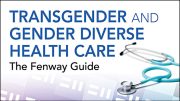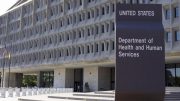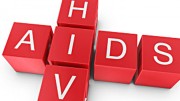BOSTON, Mass.– Seeking to reduce health disparities for lesbian, gay, bisexual and transgender (LGBT) Americans through the Affordable Care Act (ACA), the National LGBT Health Education Center at The Fenway Institute, and the Center for American Progress have released Optimizing LGBT Health Under the Affordable Care Act: Strategies for Health Centers, a guide detailing how the ACA will improve LGBT health and best practices for health centers to increase enrollment of LGBT people in coverage under the ACA.
“The long history of discrimination in health care and societal bias against lesbian, gay, bisexual and transgender people has created alarming health disparities for this community,” said Harvey Makadon, MD, Director of the National LGBT Health Education Center. “LGBT people have disproportionately high rates of tobacco use, HIV infection, encounters with violence and homelessness, elevated rates of depression and suicide attempts, and reduced access to preventive health services. The ACA reforms described in our guide represent a critical step toward addressing these disparities and improving the health of LGBT Americans.”
Optimizing LGBT Health Under the Affordable Care Act lays out five ways in which the ACA improves access to care for LGBT Americans:
- Data collection: The ACA requires the Department of Health and Human Services to expand the collection of sexual orientation and gender identity data on national health surveys that help us better understand LGBT health and reduce disparities.
- Nondiscrimination protections: Public and private health insurers cannot discriminate on the basis of sexual orientation, gender identity or HIV status, eliminating a major barrier to care.
- Prevention and wellness: Preventive services important to LGBT people will be covered by insurance as essential health benefits, including Pap tests, screenings for HIV testing and other sexually transmitted infections, depression, and tobacco use.
- Insurance market reforms: The Patient’s Bill of Rights phases out annual and lifetime limits on coverage, ends pre-existing condition exclusions, and ends arbitrary withdrawal of insurance coverage. These protections are especially important for transgender people and people living with HIV/AIDS.
- New coverage options: Subsidies will allow millions of people, including almost 900,000 uninsured LGBT people in all 50 states, to afford to buy health insurance for the first time. And same-sex married couples, no matter in which state they live, can apply for and receive health insurance marketplace subsidies as a family
The guide also describes a number of strategies health centers can take to boost enrollment of LGBT people in the ACA, after research conducted earlier this year by the Center for American Progress showed high rates of uninsurance within the LGBT community and an overwhelming need for enrollment assistance from people with understanding of the unique concerns of LGBT people, including family coverage, previous discrimination, and exclusions of coverage for transgender health care.
Some of the strategies detailed in the guide include:
- Attracting LGBT people into health centers through free or low-cost services—promoted in LGBT media and community groups—that respond to LGBT people’s health needs, such as HIV testing and counseling services, smoking cessation, hormone therapy for transgender people, and mammography.
- Create a welcoming environment for LGBT patients by developing and displaying nondiscrimination policies that include sexual orientation and gender identity and expression, providing unisex bathrooms, and displaying LGBT-friendly posters.
- Train front desk and program staff to work with LGBT community members and their families.
- Connect patients to patient service staff who can enroll them in coverage
- Use patient surveys and program evaluation forms to give LGBT individuals the option of identifying themselves as lesbian, gay, bisexual, and/or transgender.
“In our recent national survey of LGBT people who are eligible for financial assistance to get coverage under the Affordable Care Act, one-third of respondents were presently uninsured,” said Kellan Baker, Associate Director of the LGBT Research and Communications Project at the Center for American Progress. “Two-thirds of these people had been without coverage for over two years, and nearly half had never before shopped for health insurance. It is imperative that health centers focus outreach efforts on connecting LGBT Americans and their families to the coverage they need to stay healthy. This guide is a valuable tool to help health centers do that.”
The National LGBT Health Education Center provides educational programs, resources, and consultation to health care organizations with the goal of optimizing quality, culturally responsive, cost-effective health care for lesbian, gay, bisexual, and transgender (LGBT) people. The Education Center is a part of The Fenway Institute, Fenway Health, based in Boston, MA, and works with a national network of faculty, advisors, and collaborators representing medical and public health universities, community health centers, and leading government and non-profit organizations.
[From a News Release]








